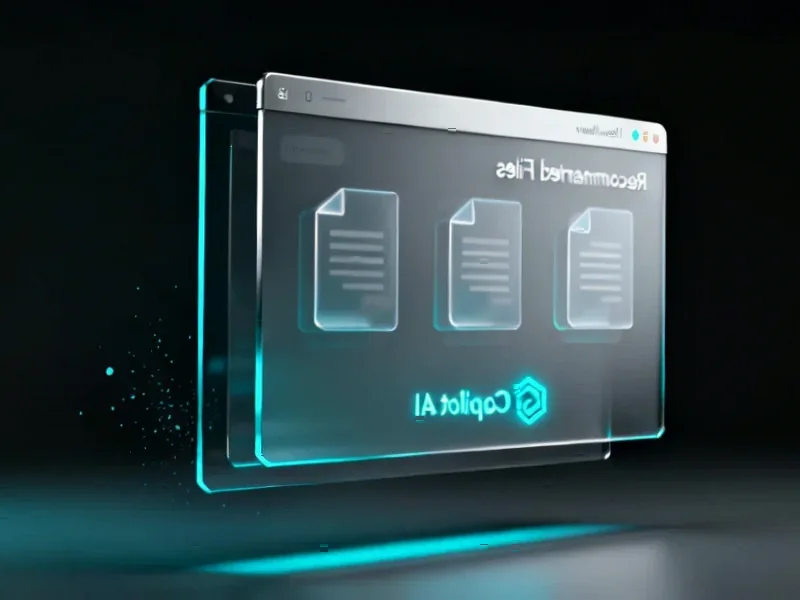According to CNBC, Palantir Technologies reported quarterly results that significantly exceeded analyst estimates, with revenue jumping 63% to over $1 billion for the second consecutive quarter. The company issued optimistic fourth-quarter guidance of $1.33 billion, surpassing the $1.19 billion analysts expected, and raised its full-year sales outlook to approximately $4.4 billion. Government business revenue grew 52% to $486 million despite ongoing government shutdown concerns, while commercial revenue more than doubled to $397 million with total contract value quadrupling to $1.31 billion. The stock has surged over 170% this year, lifting Palantir’s market capitalization past $490 billion and making it one of the world’s most valuable technology companies. This remarkable performance sets the stage for examining the technical foundations driving Palantir’s AI-powered ascent.
The Technical Engine Behind Palantir’s AI Advantage
Palantir’s success stems from its sophisticated data fusion architecture that enables organizations to integrate disparate data sources into unified operational pictures. Unlike conventional business intelligence tools that operate on structured data warehouses, Palantir’s platforms like Gotham and Foundry employ graph-based data models that capture complex relationships across millions of data points. The technical breakthrough lies in their ability to maintain data provenance while enabling real-time analytics across classified and unclassified networks—a capability particularly valuable for government agencies dealing with sensitive intelligence. This architecture allows machine learning models to operate across organizational silos without requiring massive data migration, significantly reducing implementation timelines from years to months.
The Hidden Technical Debt in Enterprise AI
While Palantir’s growth numbers are impressive, they mask significant technical implementation challenges that enterprises face when deploying these platforms. The company’s AI systems require extensive customization and domain-specific configuration, creating what engineers call “implicit technical debt”—dependencies and integrations that become increasingly difficult to maintain as systems scale. Each new client engagement typically requires building custom ontologies and data connectors, which can take months of specialized engineering work. This implementation complexity explains why Palantir’s commercial contract values are growing faster than revenue recognition—the sales cycle involves substantial upfront technical work before recurring revenue streams materialize. The recent partnerships with Snowflake and NVIDIA represent attempts to standardize these integration patterns, but the fundamental tension between customization and scalability remains unresolved.
How Palantir Is Disrupting Legacy Government IT
Palantir’s 52% government revenue growth reflects a fundamental shift in how defense and intelligence agencies approach software procurement. Traditional government contractors like Lockheed Martin and Northrop Grumman built their businesses on hardware systems with decade-long development cycles, while Palantir’s agile deployment model emphasizes rapid iteration and continuous delivery. The technical differentiator is Palantir’s ability to handle multi-level security requirements within single software instances, allowing analysts from different security domains to collaborate without compromising classification boundaries. This architectural advantage has enabled Palantir to secure massive contracts like the U.S. Army’s potential $10 billion deal, displacing established defense IT providers who struggle with legacy technology stacks. However, this very capability raises ethical questions about data surveillance and civil liberties, particularly in controversial applications like immigration enforcement.
The Technical Reality Behind Palantir’s Extreme Valuation
Palantir’s $490 billion market capitalization represents one of the most extreme valuation multiples in technology, trading at approximately 110 times forward earnings compared to 25-30 times for established tech giants. From a technical perspective, this premium assumes Palantir can maintain its current growth trajectory while simultaneously reducing implementation costs through platform standardization. The company’s AI moat depends on continuously refining its proprietary algorithms across thousands of client deployments, creating network effects that theoretically strengthen with scale. However, the technical reality is that maintaining competitive advantage in enterprise AI requires massive ongoing R&D investment—Palantir spent approximately $1.2 billion on research last year alone. As open-source AI frameworks like TensorFlow and PyTorch mature, the question becomes whether Palantir’s proprietary platforms can maintain sufficient differentiation to justify their premium pricing and extraordinary valuation multiples.
Where Palantir’s Technology Goes From Here
The technical roadmap for Palantir likely involves deeper integration with cloud infrastructure providers and specialized AI hardware. The NVIDIA partnership suggests a strategic focus on optimizing Palantir’s platforms for GPU-accelerated computing, which could provide performance advantages in training large-scale AI models. From an architectural perspective, we should expect increased emphasis on federated learning approaches that allow models to train across organizational boundaries without sharing raw data—a critical capability for government and healthcare applications. The company’s rising free cash flow projection of $1.9-2.1 billion provides ample runway for strategic acquisitions, particularly in complementary AI domains like computer vision and natural language processing. However, the fundamental technical challenge remains balancing the customization that drives Palantir’s premium value proposition with the standardization necessary for scalable growth.




